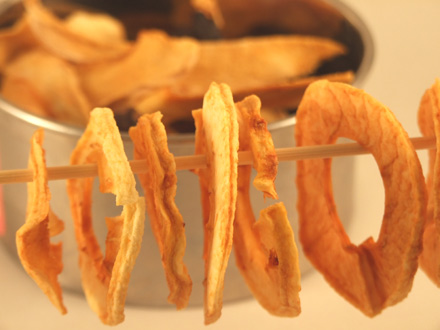FRUIT DRYING — TRADITIONAL PRESERVATION MADE EASY WITH MODERN DEHYDRATORS
Drying is one of the oldest and simplest methods to preserve fruits and vegetables. Traditionally done by sun-drying over several days, modern electric dehydrators speed up the process, making it convenient year-round.
How to Dry Fruits
- Cut fruits into suitable slices or rounds.
- Place them in the dehydrator trays (flat trays without holes are used for purees like fruit leather).
- Dry for 6 to 20 hours depending on fruit juiciness and type — consult your dehydrator’s manual for exact drying times.
- Puree fruits (e.g., raspberries, blackberries, melon) can be spread thinly to make fruit leathers or dried sheets.
Uses for Dried Fruits
- Eat as healthy snacks or trail mix ingredients
- Add to muesli or breakfast cereals
- Incorporate into baked goods like cakes and bread
- Use in desserts such as rice pudding or traditional pastries (cozonaci)
💡 Tips
- Uniform slicing ensures even drying.
- Store dried fruits in airtight containers to preserve freshness.
- Use dried fruit to add natural sweetness and texture to recipes.
- Experiment with combinations and shapes for creative presentations.
📝 Final Thoughts
Drying fruits at home is an excellent way to reduce waste, enjoy seasonal flavors year-round, and create versatile ingredients for cooking and snacking. Modern dehydrators simplify this timeless preservation technique.

